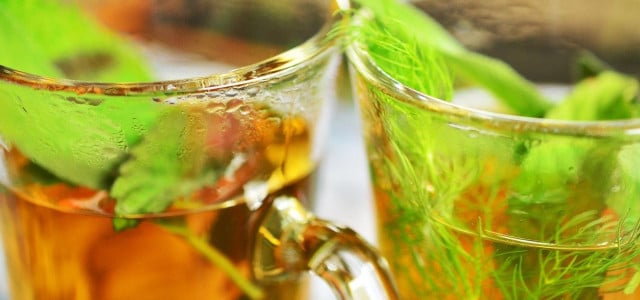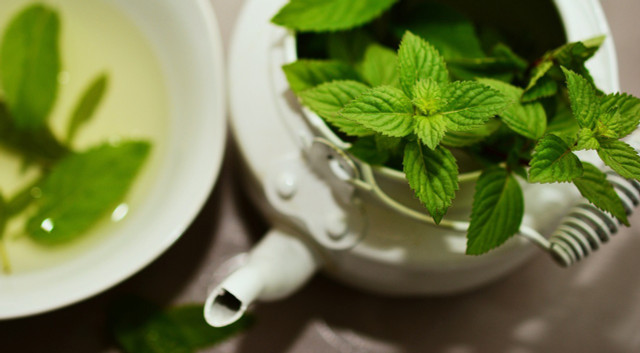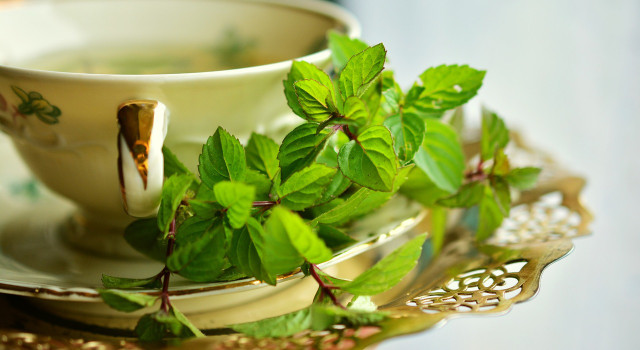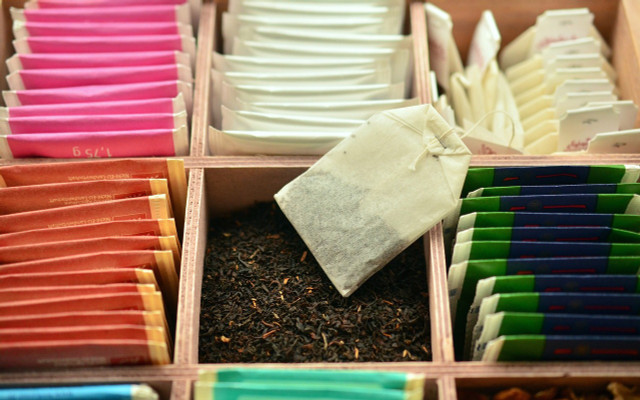
Peppermint tea has a powerful effect. It can both wake you up and calm stressed stomach nerves. But the tea also has many other benefits.
Peppermint tea is a popular drink in many regions of the world, and not just because of its healing properties. The herbal tea is particularly helpful when you feel full or have a cold. But it can do much more: Peppermint tea also has an invigorating effect and quenches thirst on hot days.
You can prepare this versatile tea from the dried leaves of peppermint. The plant thrives well in the home garden and also looks decorative in a flower box.
Methol makes peppermint tea so effective

(Photo: CC0 / Pixabay / congerdesign)
Peppermint (botanical name Mentha x piperita) gets its name from the sharp, peppery taste of its leaves. It probably originated from crosses between other types of mint. The oldest evidence comes from 18th century England.
Under the leaves are scented scales that are rich in the essential oil menthol. Even just rubbing the leaves gently releases a fresh mint scent that leaves a cold feeling on the skin. The medical portal DocCheck explains that the menthol is responsible for this cold feeling. It has a cooling effect and promotes blood circulation.
Even in hot tea, the effect of menthol provides a pleasantly cool freshness. This makes it an ideal summer drink – but you can also enjoy the soothing tea in the cooler months. A cup of peppermint tea in the morning is said to get your circulation going and also provide relief from tension headaches.
Peppermint tea is also said to have a detoxifying effect. However, there is no medical evidence for this. Nevertheless, the method is widely used in natural medicine.
Peppermint tea and its effects

(Photo: CC0/pixabay/congerdesign)
As already mentioned, peppermint tea is mainly used for colds and stomach problems.
The effect of peppermint tea on colds:
- Hot peppermint tea with honey is one of the classic cold teas. In this case too, it is the menthol that is responsible for the healing effect of peppermint tea.
- When you drink a cup of hot tea, you inhale the essential menthol vapors at the same time. They stimulate the blood flow to the nasal mucous membranes. This allows you to breathe better again.
The effect of peppermint tea on stomach problems:
- Peppermint tea is mainly known as a medicinal tea for stomach problems. According to Netdoktor, peppermint tea helps with stomach upsets by calming the stomach nerves. This antispasmodic effect of peppermint tea also relieves flatulence. On vacation, when your stomach is upset by unfamiliar food, a cup of peppermint tea can calm it down again.
- According to Netdoktor, peppermint has an antispasmodic effect and stimulates bile production. Bile is essential for fat digestion. In France, for example, a cup of herbal tea with peppermint is a must at the end of a multi-course meal. The tea supports digestion, especially with fatty foods, and prevents the unpleasant feeling of fullness.
Peppermint tea from our own cultivation

(Photo: CC0/pixabay/congerdesign)
You can also enjoy the effects of peppermint tea by growing your own peppermint. This way you always have fresh leaves on hand or you can stock up on dried leaves.
The plant is hardy and long-lasting. You can easily plant peppermint yourself, for example in the garden or on the balcony.
- The harvest of the first fresh leaves begins in spring.
- In summer you should cut the plant down and dry the peppermint.
To benefit from the effects of peppermint tea, you need about five to seven fresh leaves or about seven to ten dried leaves.
How to prepare peppermint tea from loose leaves:
- Put the clean leaves in the pot. You can also use a reusable tea strainer (available from Memolife, for example) or a bag.
- Pour boiling water over everything.
- Let the peppermint tea steep for ten minutes.
Enjoy the effects of peppermint tea – but fairly traded and organic
When buying tea, you should make sure it is organic. This way you avoid the healthy effects of peppermint tea being impaired by chemical-synthetic pesticides.
This is not always a given: for global tea production, peppermint usually no longer comes from the original growing areas, but from Spain, South America, Asia or North Africa. It therefore comes from regions where industrial-style agriculture produces the agricultural products that meet the needs of industrialized nations.
For this reason, you should also make sure that the tea is fair trade. With fair trade products, the pickers on the plantations receive a fair wage for their work. This enables them to meet their basic needs in daily life.
Read more on Techzle\.com:
- Best list: The best organic supermarkets
- List of kitchen herbs: these herbs should not be missing in any kitchen
- Sustainable tea accessories: chic pots, mugs & more
** marked with ** or orange underlined Links to sources are sometimes affiliate links: If you buy here, you are actively supporting Techzle\.com, because we then receive a small part of the sales proceeds. More information.